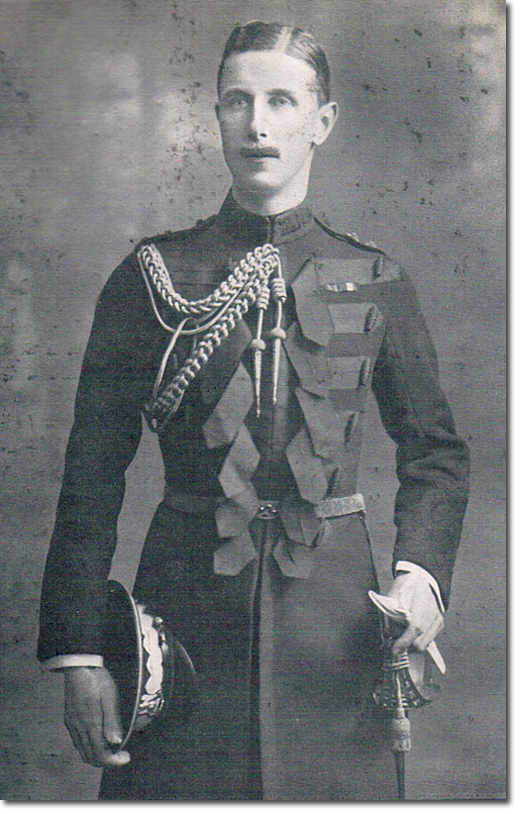|
|


|
|
Eric Henry Bonham was born on 3 July 1875. He was the son of Sir George Francis Bonham 2nd Baronet of Malmesbury, and Louisa Buchanan. He was at first commissioned into the Yeomanry. He was an attache in the Diplomatic Service in 1898 but went out to South Africa and fought in the Boer War. He joined the Scots Greys as transport officer on 12 Oct 1900, from the Duke of Cambridge's IY. A year later he was mentioned as a 2nd Lieut in A Squadron, and in 1902 he was a Lieutenant in command of 50 men of C Squadron for a convoy escort. In 1909 he was Extra Equerry to Prince Arthur of Connaught and Equerry in 1911. He was invested as MVO in 1912, elevated to CVO in 1926. In 1910 he married Ethel Seymour daughter of Lt-Col Leopold Richard Seymour of the Grenadier Guards. He was Comptroller of the Household from 1913 to 1926 but fought in the First World War where he was mentioned in despatches. He reached the rank of major and succeed to the title of 3rd Baronet on 31 July 1927. He and Ethel had two children, a daughter, Elizabeth and a son, Major Sir Anthony Lionel Thomas Bonham 4th Bt. who was also an officer in the Scots Greys. Sir Eric Bonham died on 14 Nov 1937. A portrait of him riding his horse Grey Lady, that survived World War One, was painted by Munnings in 1919.
An autobiography written by John Cusack who was a soldier in the Scots Greys mentions Eric Bonham. Around the year 1909 he wrote: 'We were fortunate in our troop officer, Lieutenant Bonham, a big fine handsome gentleman, over 6 feet tall, because he was keenly interested in his men's welfare. He did two things which particularly helped us: first he had installed some special incandescent gas-mantles, which greatly improved the lighting in our barracks; and then he provided the troop with special little bread-baskets to use when mucking out the stables. These were a great boon on Sunday mornings. 'On Sundays the stables had to be done out in an elaborate way; the straw was all plaited behind the stalls; the forks and the shovels which we used to muck out had to be burnished and polished until they shone; they were all then laid out in a special pattern in the middle of the stables. The barrows had to be hand scrubbed until they were spotless. Obviously this meant that we couldn't dirty any of our equipment if the horses thoughtlessly deposited any droppings after everything was spick and span. Until Mr Bonham produced his little bread-baskets we had to stand around on the 'qui vive' trying to catch the droppings in our hands before they fell on the straw.' Suggested Reading Scarlet Fever by John Cusack MM and Ivor Herbert (Cassell 1972) |
Armed Forces | Art and Culture | Articles | Biographies | Colonies | Discussion | Glossary | Home | Library | Links | Map Room | Sources and Media | Science and Technology | Search | Student Zone | Timelines | TV & Film | Wargames